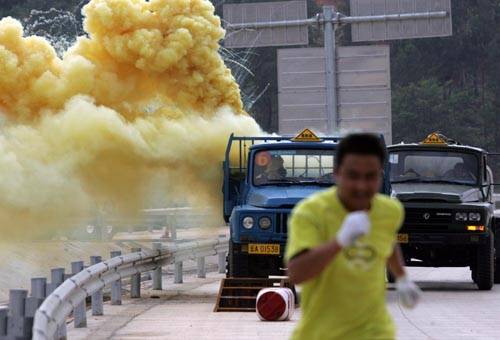From liquid chlorine to sodium hypochlorite
Process, has made no secret of liquid chlorine is added to the tap water that came out of the tap water, however, see to the naked eye is very clean, but after processing may inevitably contains residual chlorine in water, water, boiling water, cook, wash dishes, wash the fruit, and even the shower water, can be directly affect the healthy body, this is the problem that nots allow to ignore.
Recently, Ningbo 23 water supply enterprises under the administration of 36 water plants have all completed the transformation of sodium hypochlorite disinfection, indicating that the use of many years of liquid chlorine disinfection is about to become a history.
The site of Liquid ammonia leakage
It is understood that the urban water supply enterprises generally use liquid chlorine disinfection, but liquid chlorine is a highly toxic dangerous goods, and the storage of liquid chlorine cylinder is a high pressure vessel, the use and storage of liquid chlorine has been all levels of government and water production, water supply enterprises safety prevention of key content. So with sodium hypochlorite instead of liquid chlorine, is there any impact in terms of water quality? According to the public utility supervision center of Ningbo City Management Bureau, sodium hypochlorite and liquid chlorine are disinfecting on the same principle and both have good disinfecting effects. Although the use of sodium hypochlorite disinfection, the cost has increased, but the safety is higher, more convenient storage and use, and the change of disinfection method will not affect the quality of factory water, but also can improve the taste of tap water.
In the new era of life, with the rapid development of science and technology, we are also pursuing a safer and healthier life. Replacing liquid chlorine with sodium hypochlorite is a change that breaks through tradition and is also a march to a new life.
- Prev: Separation Of Isotope Gases
- Next: Sulfur dioxide in wine





 Facebook
Facebook YouTube
YouTube LinkedIn
LinkedIn Twitter
Twitter